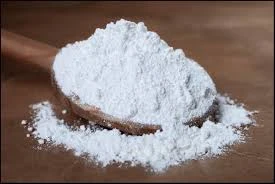
Analysis of Fertilizer Costs and Their Impact on Agriculture Sustainability
The Impact of Fertilizer Costs on Agriculture and Food Security
In the modern agricultural landscape, fertilizers play a critical role in enhancing crop yields and food production. However, the rising costs of fertilizers pose significant challenges for farmers worldwide, affecting their livelihoods and agricultural sustainability. This article delves into the factors contributing to the increasing fertilizer costs, the implications for farmers and food security, and potential strategies to mitigate these challenges.
Understanding Fertilizer Costs
Fertilizer prices are influenced by various factors, including raw material costs, production processes, global demand, and geopolitical events. The primary nutrients found in fertilizers—nitrogen (N), phosphorus (P), and potassium (K)—are derived from natural resources that can be subject to market volatility. For instance, the prices of nitrogen fertilizers are closely linked to natural gas prices, as natural gas is a key input in their production. When oil and gas prices surge, fertilizer costs typically follow suit, placing immense pressure on the agricultural sector.
Additionally, global demand for fertilizers continues to grow, driven by an increasing population and the need for higher food production. As countries like India and China ramp up their agricultural output, the demand for fertilizers skyrockets, pushing prices higher. Furthermore, logistical challenges in transporting fertilizers, exacerbated by trade restrictions or geopolitical tensions, can lead to supply shortages and increased costs.
The Impacts on Farmers
The escalating costs of fertilizers have profound implications for farmers, particularly smallholder and subsistence farmers who operate on tight margins. Rising fertilizer prices can lead to a decrease in profit margins, forcing farmers to make difficult decisions about the inputs they use. Many may opt to cut back on fertilizer usage, which could result in lower crop yields and poorer quality produce. This, in turn, jeopardizes food supply and threatens the livelihoods of farmers who rely on consistent yields to support their families.
In developed countries, where commercial farming is more prevalent, rising fertilizer costs may lead to increased prices for consumers
. As farmers pass their increased production costs onto consumers, food prices rise, which can disproportionately affect low-income populations. In regions where food security is already a pressing concern, such fluctuations can exacerbate hunger and malnutrition.Implications for Food Security
fertilizer cost

Food security is intrinsically linked to agriculture, and the rising costs of fertilizers represent a significant threat to this vital issue. As farmers struggle to afford fertilizers, the potential for reduced agricultural output looms large. A decline in food production can result in higher food prices and increased competition for available resources, ultimately leading to food scarcity.
Moreover, regions that rely heavily on imports for their food supply are particularly vulnerable to fertilizer cost fluctuations. If internal agricultural production declines due to high fertilizer prices, countries may find themselves unable to meet their population's needs, increasing their dependence on international markets, where prices may be even more unpredictable.
Potential Solutions
To address the challenges posed by rising fertilizer costs, a multifaceted approach is essential. Firstly, investing in research and development of alternative fertilizer sources and sustainable agricultural practices can help reduce dependency on conventional fertilizers. For instance, the use of organic fertilizers, crop rotation, and soil health improvement techniques can enhance soil fertility and reduce the need for chemical inputs.
Additionally, governments and organizations can play a crucial role in supporting farmers through subsidies, financial assistance, and access to affordable credit. Providing resources and education on efficient fertilizer use can also help farmers optimize their input expenses without sacrificing crop yields.
Lastly, fostering global collaboration to stabilize fertilizer markets can mitigate price volatility. International agreements aimed at regulating raw material prices and ensuring equitable access to fertilizers can support both producers and consumers.
Conclusion
The rising costs of fertilizers present a multifaceted challenge that directly impacts farmers and food security around the globe. As agricultural demands continue to escalate, addressing this issue through innovation, support for farmers, and global cooperation is imperative. By investing in sustainable practices and finding solutions to stabilize fertilizer costs, we can work toward a more resilient agricultural system that ensures food security for all.
-
Pure Sodium Dichloroisocyanurate Dihydrate | Powerful DisinfectantNewsAug.29,2025
-
Industrial Chemicals: Quality & Purity for Every IndustryNewsAug.28,2025
-
Nitrile Rubber Honoring Strict Production StandardsNewsAug.22,2025
-
Aspartame Ingredients Honoring Food Safety ValuesNewsAug.22,2025
-
Fertilizer for Balanced Plant NutritionNewsAug.22,2025
-
Cyanide Gold Processing with High Purity AdditivesNewsAug.22,2025
-
Formic Acid in Textile Dyeing ApplicationsNewsAug.22,2025
Hebei Tenger Chemical Technology Co., Ltd. focuses on the chemical industry and is committed to the export service of chemical raw materials.
-

view more DiethanolisopropanolamineIn the ever-growing field of chemical solutions, diethanolisopropanolamine (DEIPA) stands out as a versatile and important compound. Due to its unique chemical structure and properties, DEIPA is of interest to various industries including construction, personal care, and agriculture. -

view more TriisopropanolamineTriisopropanolamine (TIPA) alkanol amine substance, is a kind of alcohol amine compound with amino and alcohol hydroxyl, and because of its molecules contains both amino and hydroxyl. -

view more Tetramethyl Thiuram DisulfideTetramethyl thiuram disulfide, also known as TMTD, is a white to light-yellow powder with a distinct sulfur-like odor. It is soluble in organic solvents such as benzene, acetone, and ethyl acetate, making it highly versatile for use in different formulations. TMTD is known for its excellent vulcanization acceleration properties, which makes it a key ingredient in the production of rubber products. Additionally, it acts as an effective fungicide and bactericide, making it valuable in agricultural applications. Its high purity and stability ensure consistent performance, making it a preferred choice for manufacturers across various industries.





